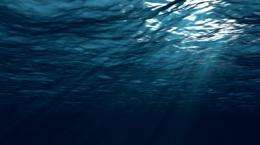New techniques reveal how microbes shape the health and biodiversity of oceans

Microbes in the ocean take up massive amounts of carbon dioxide, contributing to the global carbon cycle and affecting climate change. These microbes are abundant, diverse and critical to the health of ecosystems, but they are very hard to study. Innovations in sequencing technologies and techniques are allowing scientists to break open the so-called 'black box' of ocean microbes and revolutionizing science in the ocean.
Three leading experts will share their recent findings on the role of microbes in ocean ecosystems at an AAAS symposium Feb. 13 entitled "Seeing the Invisible: How Sequencing Diverse Eukaryotes Transforms Ocean Science." CIFAR Senior Fellow Patrick Keeling (University of British Columbia) will present his research on how free living algae can evolve into parasites. He will discuss the algal origin of the lineage that includes the malaria parasite and new ideas emerging from marine biodiversity research, suggesting that the parasites' infection mechanism initially evolved as a benign system that allowed a beneficial symbiotic association between marine algae and corals.
CIFAR Advisor E. Virginia Armbrust (University of Washington) will illuminate scientific knowledge on diatoms, which are an abundant group of single-celled algae that perform about one-fifth of the photosynthesis on Earth each year. They regulate CO2 in the atmosphere and support food webs in the ocean, with occasional help from symbiotic bacteria.
In the last presentation, CIFAR Senior Fellow Alexandra Z. Worden (Monterey Bay Aquarium Research Institute) will explore how marine algae respond to their environments. She will discuss scientific innovations that led to discoveries about how vitamins control algal blooms and how a group of algae related to land plants, prasinophytes, might contain clues about the evolution of plants. The findings highlight the elegant mechanisms marine cells use to respond to environmental cues using switches that respond either to metabolites or to variations in light wavelengths.
"Altogether, these three presentations highlight the diversity of marine protists and how deeply this diversity impacts ecosystems that sustain the macroscopic life with which we are more familiar," Keeling says. "Incorporating these complex, yet tiny cells into evolutionary and ecological models is really only beginning, but has already made profound changes to both fields."
The challenges of advancing marine microbial research are also the subject of a Feb. 13 review article in Science co-authored by Worden, Keeling and several colleagues entitled "Rethinking the marine carbon cycle: Factoring in the multifarious lifestyles of microbes." The article outlines the importance of protists and their complex lifestyles in ocean carbon cycles.
More information: Alexandra Z. Worden, Michael J. Follows, Stephen J. Giovannoni, Susanne Wilken, Amy E. Zimmerman, Patrick J. Keeling, "Rethinking the marine carbon cycle: Factoring in the multifarious lifestyles of microbes," Science, Feb. 13, 2015.
Journal information: Science
Provided by Canadian Institute for Advanced Research

















